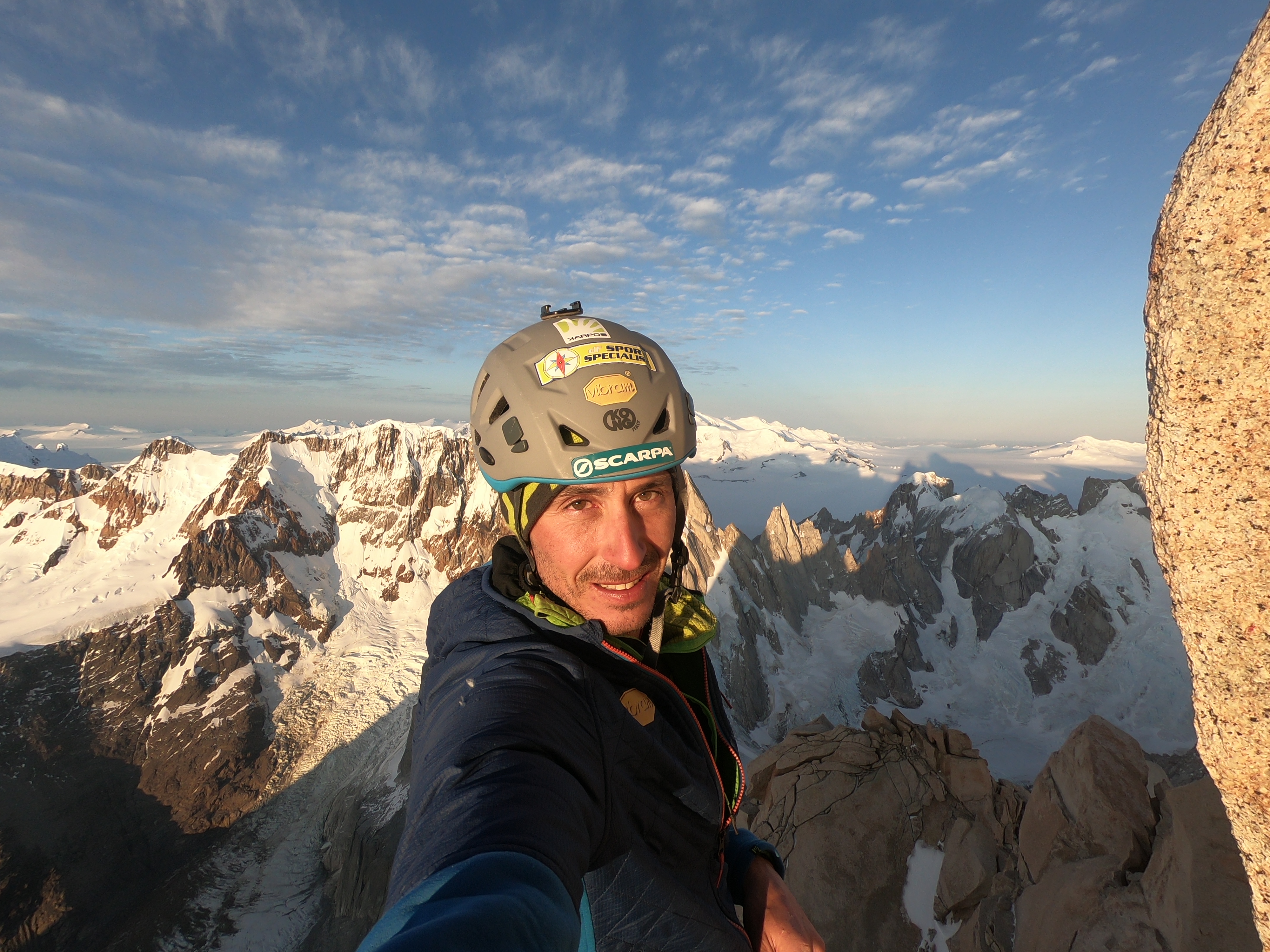
Interview with Matteo Della Bordella, climbing the mountains on equal arms
We interviewed Matteo Della Bordella, professional alpinist, ambassador of Vibram and Karpos and also president of the Ragni di Lecco. He is a lover of an essential and light mountaineering because he loves to face the mountain on equal terms.

How are you? What are you doing on these quarantine days? Have you found new passions?
I got back from Patagonia a few days before the quarantine. Let’s just say that I had already decided before all this happened to devote this time to training, without concentrating too much on other projects and so for now nothing in particular has missed me. Now that everything is in the making I’m trying to understand what we could do and above all how to organize future projects. Now, for example, in May I wanted to go and free up a street that I myself had opened in Canton Ticino and unfortunately although it’s close by as a place it’s in another state, so it gets complicated. Also in the summer I wanted to go to Pakistan, but we’ll see, we’ll keep on standby for another month or so and then we’ll decide.
If you had to describe yourself with 4 words, what would they be?
I would say that I am determined because I believe in my goals and I like to carry them out for better or for worse, we can say that I am curious because I like to see new and different things. I would say that I’m also creative because I think it’s the basis of many things because I like to travel and create new ideas. As a last word I would say, even if it is not a single word, I like to be with friends and share my passion with others.
We know you have a degree in management engineering, how did you manage to continue your studies and at the same time your career as a mountaineer?
For many years it hasn’t been easy to combine the two things, let’s say you still have to sacrifice something, but I have always managed to go to the mountains. Slowly the passion for the mountains started to take over, because the more you go, the more ideas and motivation you get, so when I had the chance I took this chance, but I think it’s possible for everyone.
In the future do you see yourself continuing this career or maybe you see yourself coming back to work in the office as an engineer?
I see it as difficult to be an engineer, because I haven’t been in that field for 8 years now, so I’ve lost enough, so I’d say no. Let’s say that I like being a mountaineer now, but maybe in 10 years I could also consider working in the office, but certainly in the outdoor sector.
You are currently president of the Ragni di Lecco, would you like to tell us their story and their values?
The Lecco Spiders were founded in 1946 by 4 guys who, when there were not many resources, joined a group to go climbing and buy the equipment. They joined together to succeed in doing something that otherwise could not have been done, so the spirit of the Spiders from the beginning was that: to achieve together results that the individual would not be able to achieve. Even the youngest of us now continue to team up and appreciate it as a way, so I would say that this is a bit like that, along with clearly the passion for mountaineering, the legacy they left us.
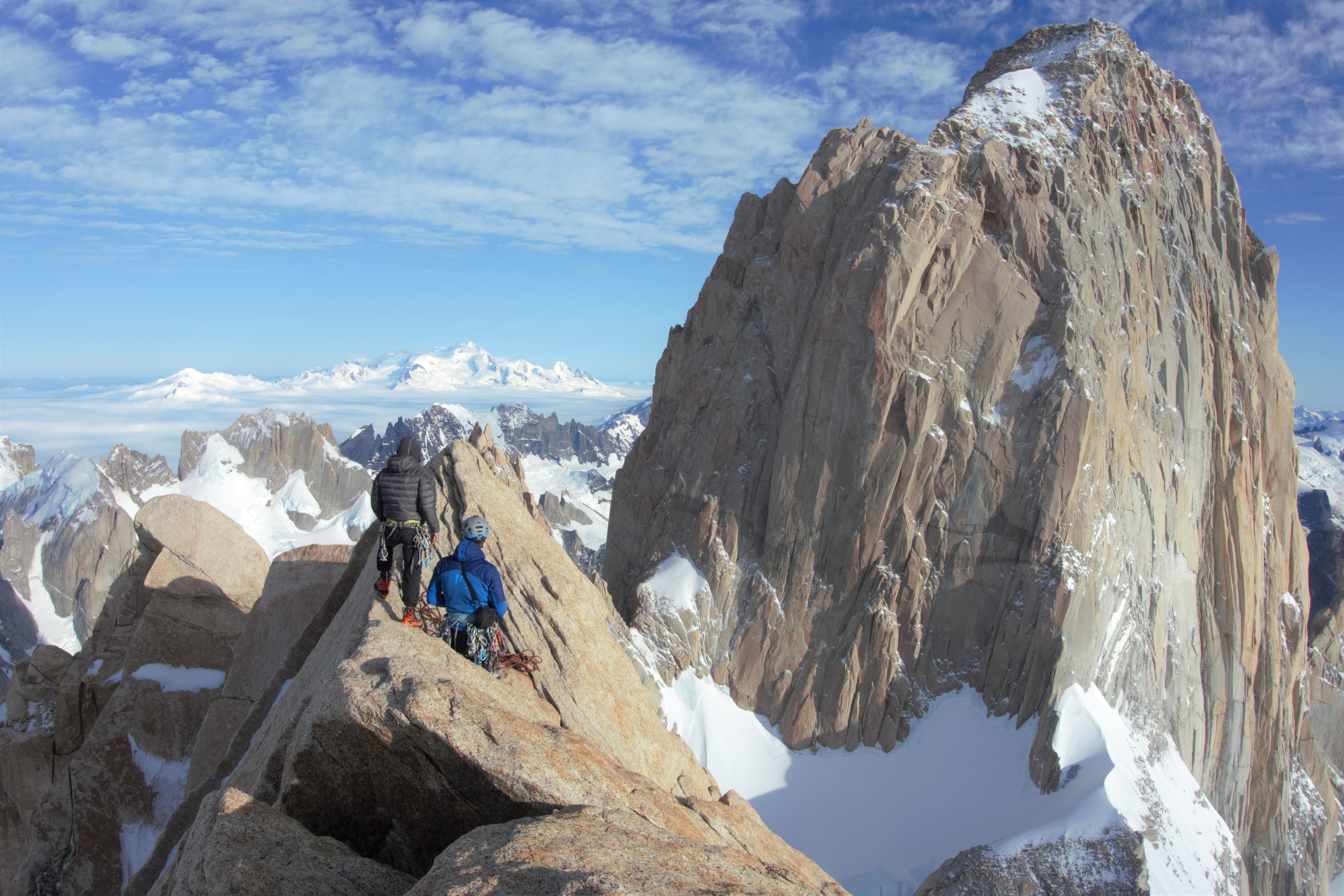
How much does the responsibility to carry on the Spiders’ name weigh, considering the sacred monsters that you are now, but also considering your predecessors?
If you looked at our predecessors, you wouldn’t even feel like leaving home. The trick is not to think about it and go your own way, giving your best. You certainly can’t compare to the climbs that Cassin or Mauri and even Bonatti have done, because they were incredible climbers from other times. The trick is really not to think about comparison, but to go ahead in your own way.
What is your relationship with nature and mountains?
For me it is very important when you go to the mountains the style you go there, in fact you have to be careful not to leave your mark and not to change the place where you go. You have to look a bit further and preserve what we have for future generations. I marry this philosophy of respect for the environment trying to make expeditions as light as possible, where you have to get by with your strength avoiding the means to the maximum. There are two reasons: the environmentalist one and the contact with nature itself.
Thus with this thought are you also referring to projects like the one in Greenland?
For those who don’t know, Matteo and his companions have climbed the North-East face of Skark Tooth making the entire trip (225km) in total autonomy, 200km of which by kayak. Moreover, you did not leave any kind of material on the wall.
Yes, that was one of my most beautiful expeditions because it was particularly complete, an adventure in every sense. It was certainly the one that follows the thought I was talking about earlier. We did it on our own, even for the kayaking part, which was new for all three of us at the time. It’s not always easy to do this kind of expeditions, but when you can, I really like to look for new places, travel and experience different things.
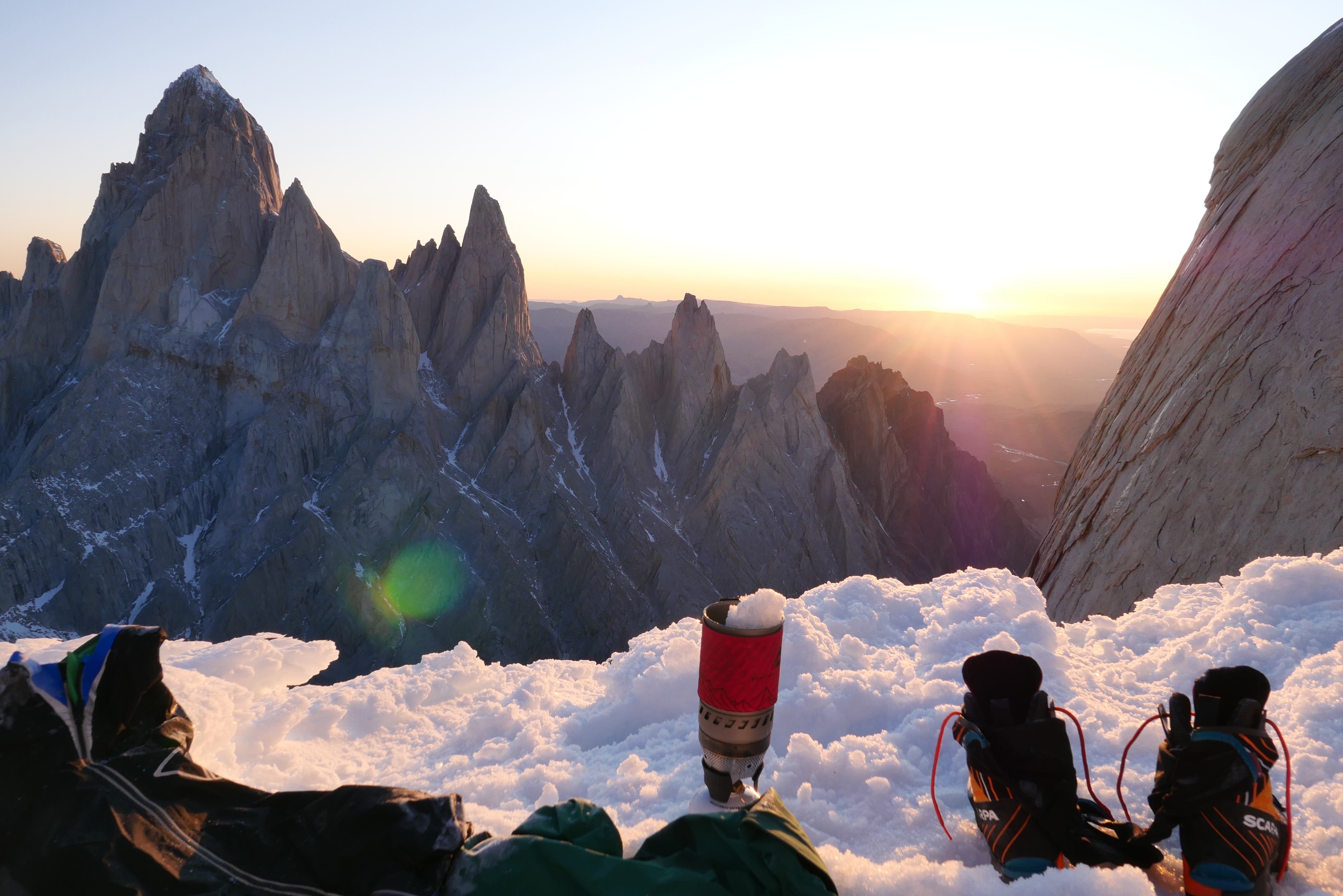
“For me it is very important when you go to the mountains the style in which you go there, in fact you have to be careful not to leave your mark and not to change the place where you go. You have to look a little bit further and preserve what we have for future generations.”
You’ve traveled a lot in your career: is there a place that really stuck in your heart? And one where you don’t want to go back?
The place that really stuck in my heart is certainly Patagonia, which also allows me to do the kind of mountaineering that I like best: technical and on difficult walls, where you have a lot of factors to take into account and where maybe the chances of climbing are really reduced to a minimum. A place where I don’t come back anymore…it’s really difficult I have to tell you. I had a bad experience a few years ago at Yosemite Park where I wanted to try to climb the Salathé free, but we had 18 people in front of us and all sorts of things happened. Even one of the last few nights, we bivouacked under another group of people who, being above us, couldn’t pee, otherwise it would have gotten on us. So they all did it in a three-and-a-half-liter bottle, those American bottles. The next day we left again, we caught up with them, they were going to leave too, and a girl threw this gallon along a crack, while a friend of mine was still climbing up, ending up giving him a beautiful shower. I really don’t want to be in a wall like that anymore to queue up behind so many people.
We know you’re very close to the Egger Tower that you climbed from the untouched West Face, would you like to tell us about it and explain why you still feel so close?
I feel connected because in the end it was the first great expedition experience and like all the times when you find yourself doing something for the first time you learn a lot and you learn from your mistakes. Specifically, on the Egger Tower, I was with Matteo Bernasconi and we were both without a lot of experience and we really went to the brink: I didn’t have very well in mind about the approach and also the material was really badly calculated, we had extra equipment and food not even what we needed. We had to come back for three years to be able to climb this route and for me it was really a school where I learned what mountaineering is in Patagonia.
Now after these experiences, are you the kind of person who when planning something evaluates everything very carefully or sometimes you approach a project even if you are not sure it is really within your reach?
Anyway, you treasure what you learn and some climbs now, which years ago seemed utopian to me, now I look at them from a different perspective. Surely you are looking for something more complex every time, and now looking forward to the future there is the east face of Serro Torre, where we want to climb trying again this line in alpine style.
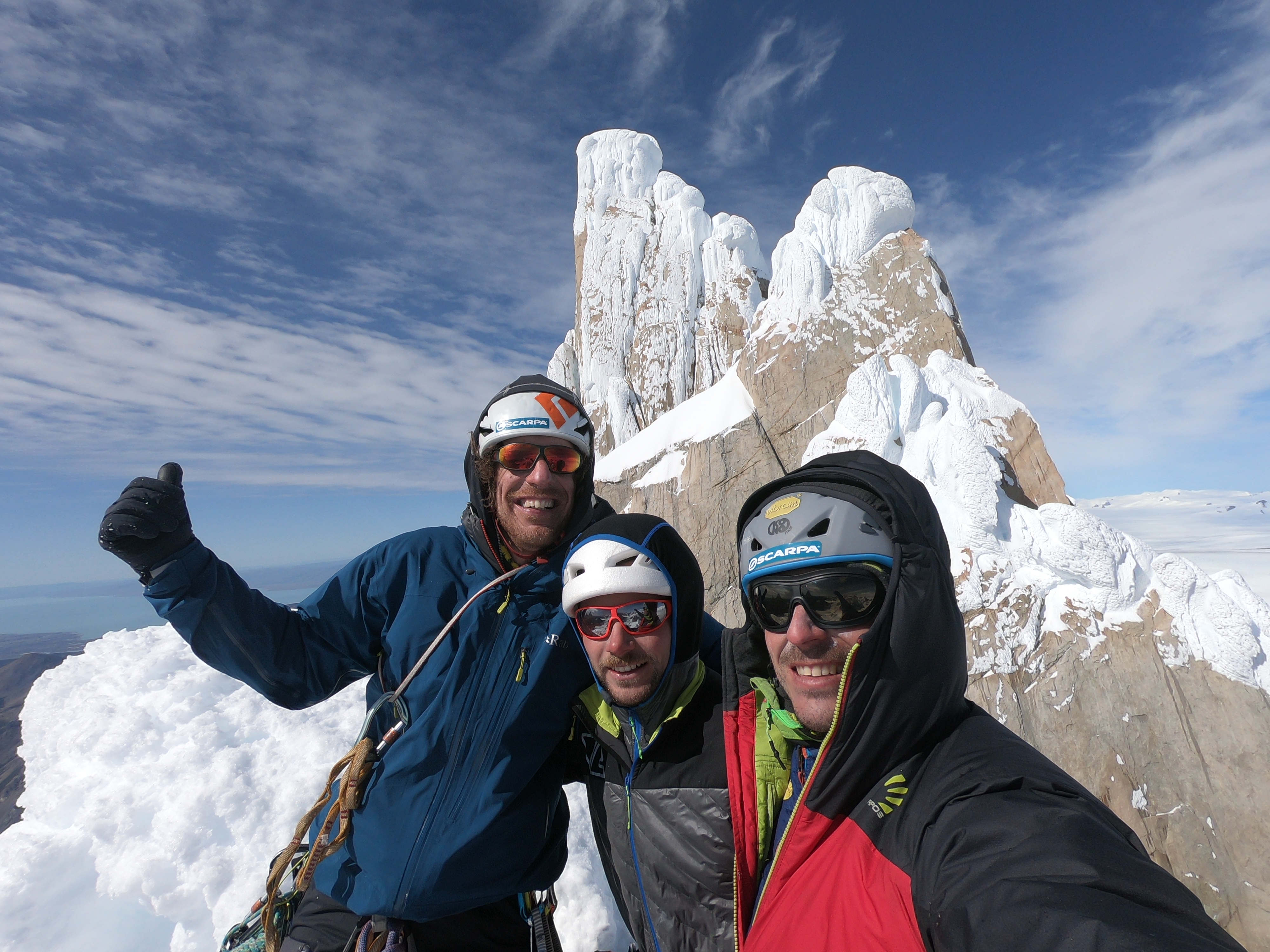
In 2019 with Luca Schiera and Matteo De Zaiacomo you climbed the untouched West face of Bhagirathi IV, but the peculiarity is that you opened it in 20 hours of climbing. Was it planned as a timing or were you also surprised?
It’s a long story, it’s a wall that in truth we had already tried in 2015 and practically then we had made several attempts, finally finding a line in which in just two days we were already at 200m of the end, but then the last part of the wall that is made of Shale had rejected us because it was too rotten, so we went home. It stayed there for years, until 2019 where we all felt much better and grew up both physically and alpinistically. What was the problem? The day before we started a rock discharge came down right along our line and it really messed up our whole expedition and given this high risk we had already decided to give up. In the end we had packed up to go home, but after some evaluations we decided to make an attempt as fast as possible. In conclusion the attempt went well, we made it during the day and we were also surprised.
Did the landslide change some passages on the route? Did it make the conditions more difficult?
We climbed from the very same line from which the landslide had come down and we discovered that it had actually come down from higher up, so not where we climbed, even though the line was full of debris and dust. So the climb wasn’t exactly pleasant, but somehow we climbed up.
We got an interesting anecdote: is it true that in Greenland you risked being the breakfast of a white bear?
It’s true! On the last day of the expedition, after 32 days that we had not seen white bears, even if the population had warned us in their presence, that night instead of sleeping in a tent as usual, we found an arm and we went in there leaving the rifle to the kayaks 200m away. In the morning I hear a beastly scream, I wake up and see a bear in the middle of the room where we were sleeping. I don’t understand anything, I scream too, I get out of my sleeping bag and throw myself on a table that was in the room starting to beat it to make as much noise as possible and scare it. So finally the bear comes out of the shed and we barricade ourselves inside the shed, even though we had nothing. Luckily the bear probably wasn’t hungry, but he was just curious and when he got away a little bit, we ran to the kayaks, we shot some firecrackers to scare him and after hours we finally managed to leave again.
If you had to give a message to the next generation, what would you say?
I would say that I have respect for people and also for the world we live in, because it is unique and there are no alternatives. I would say it simply because I believe that once you live with respect for others, in a positive way towards the world, you can live better.
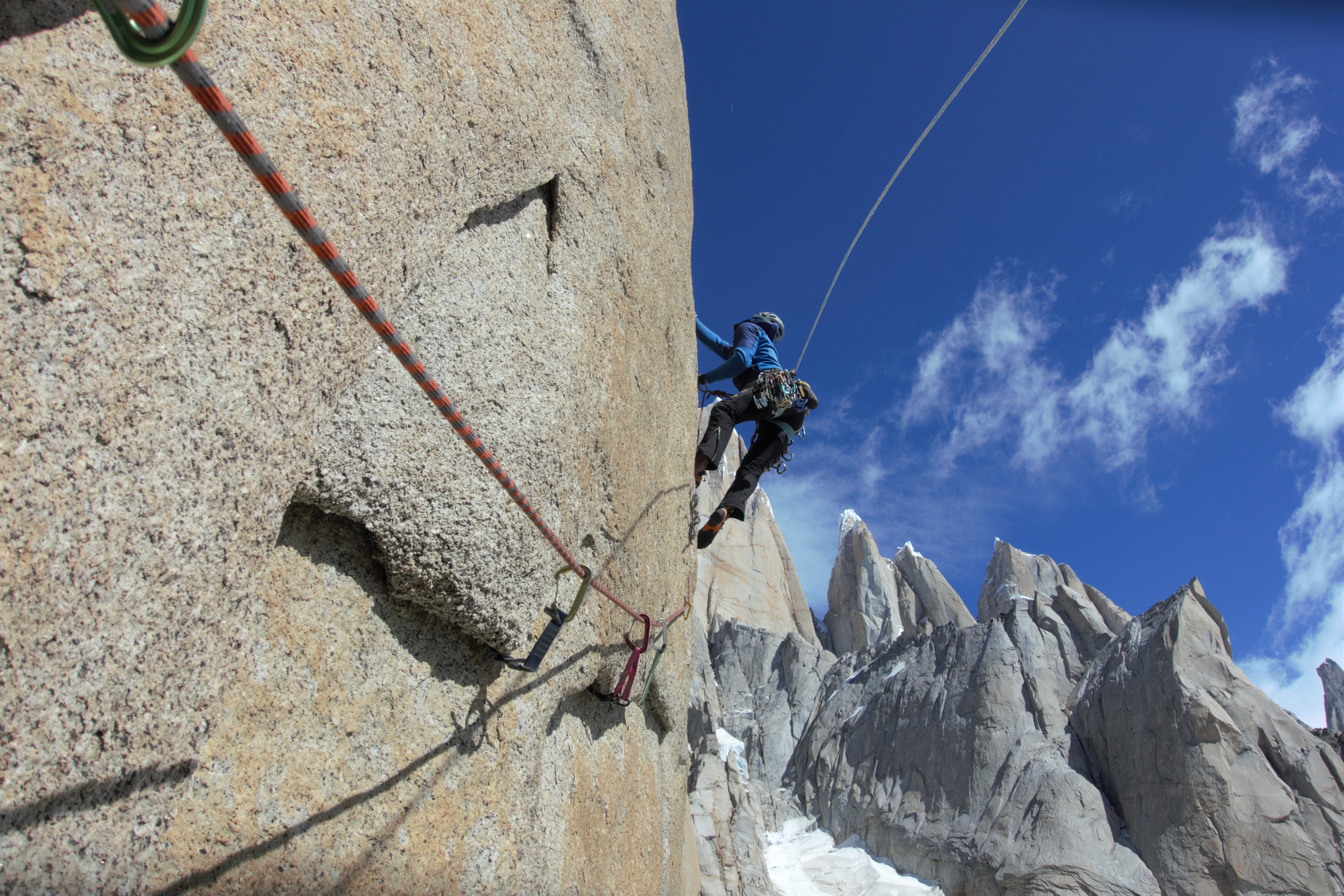
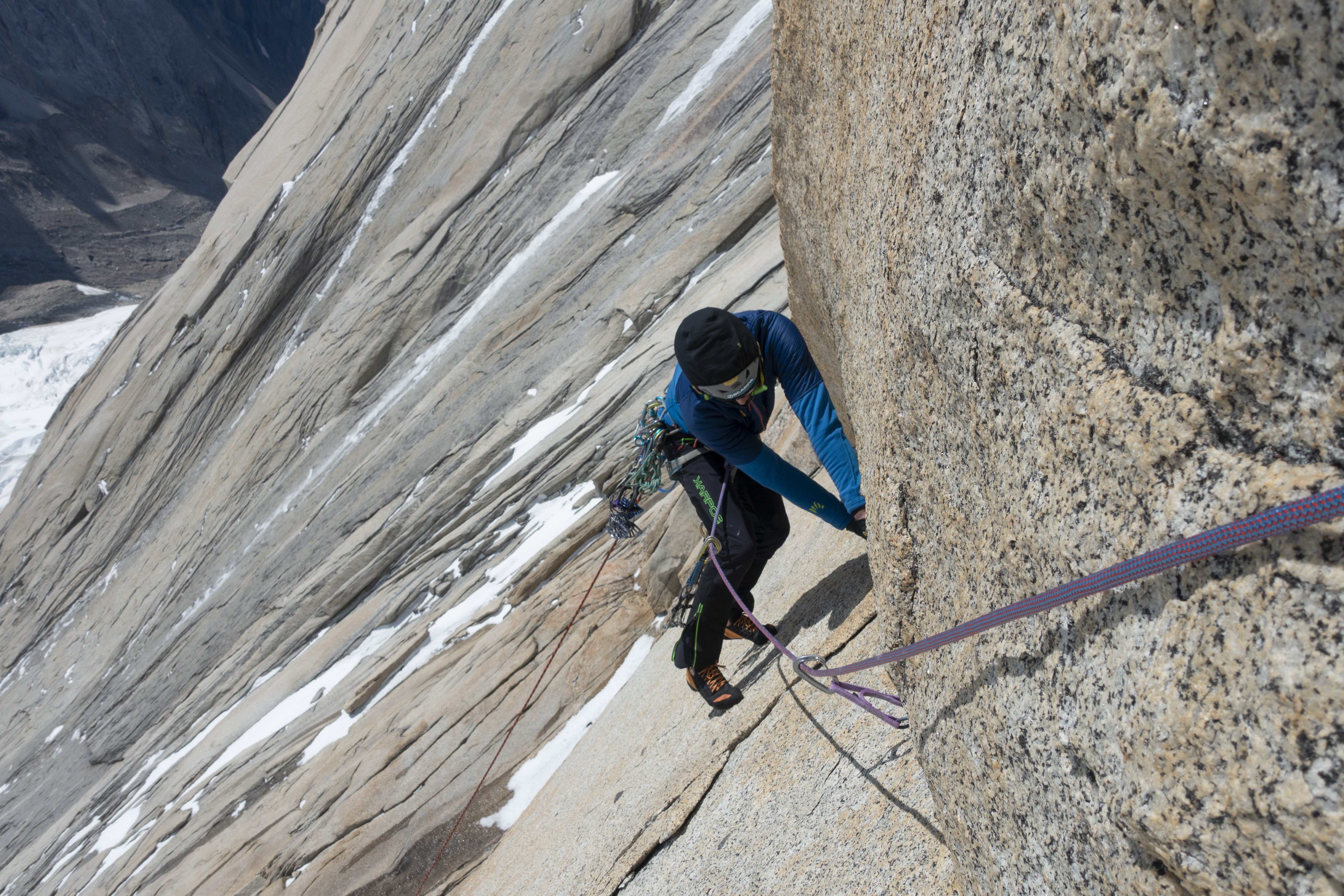
Share this Feature